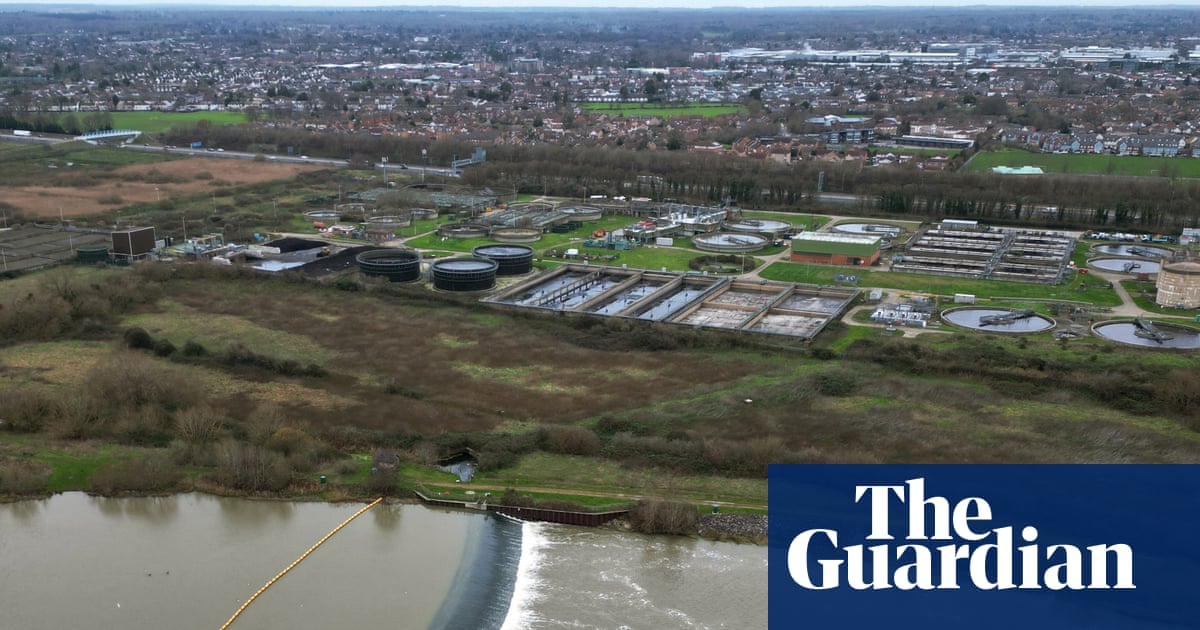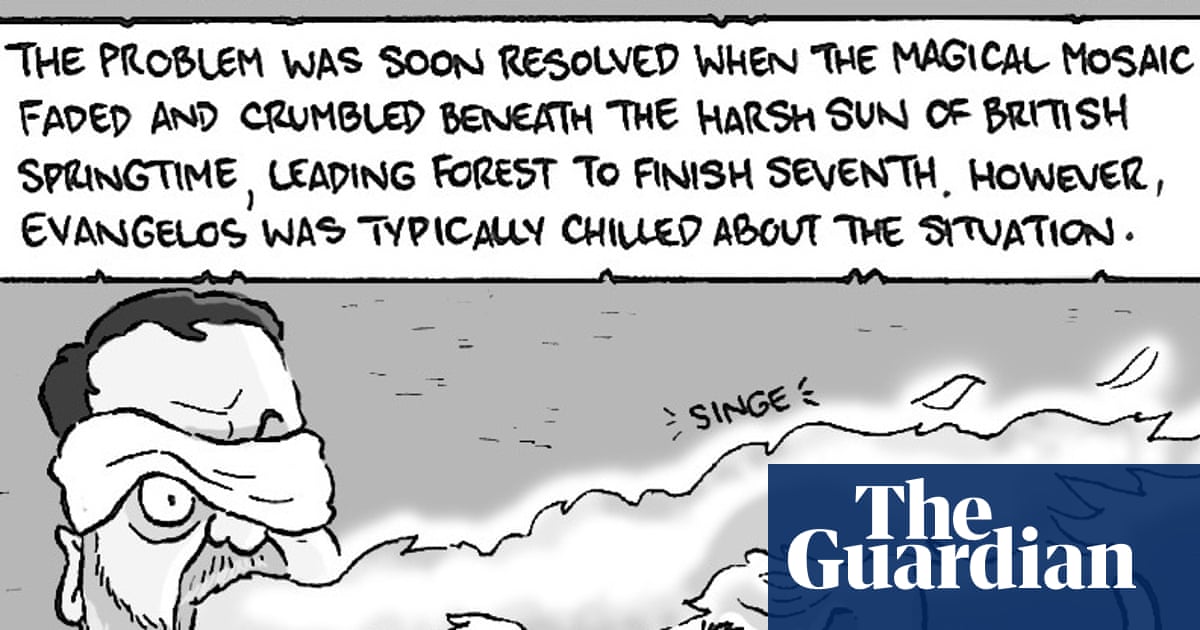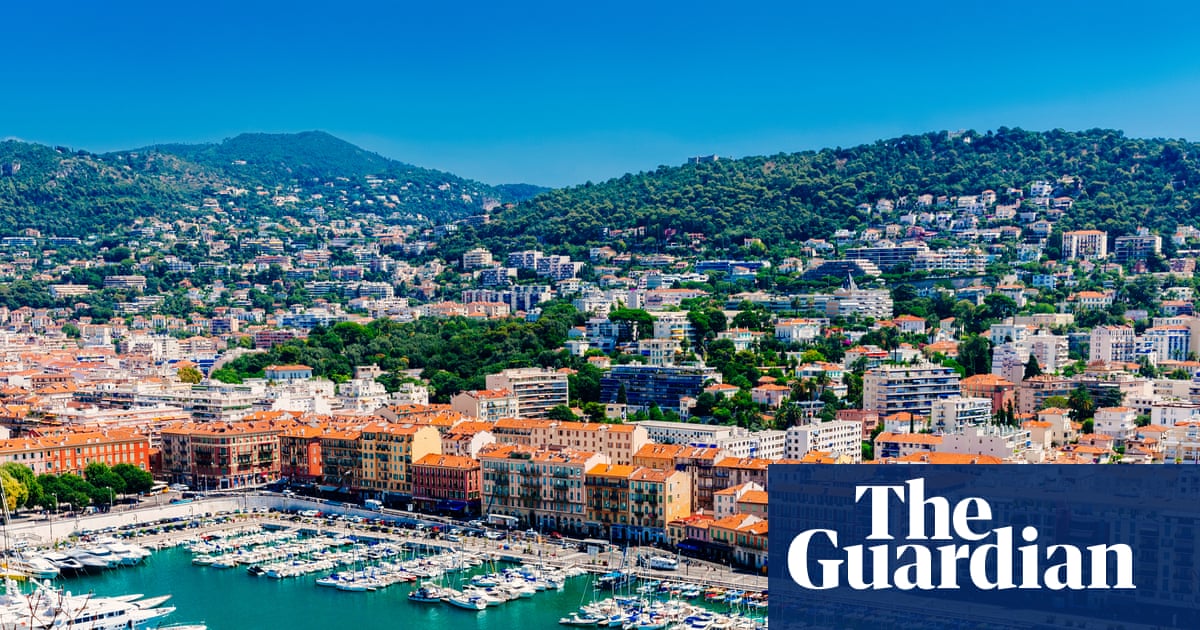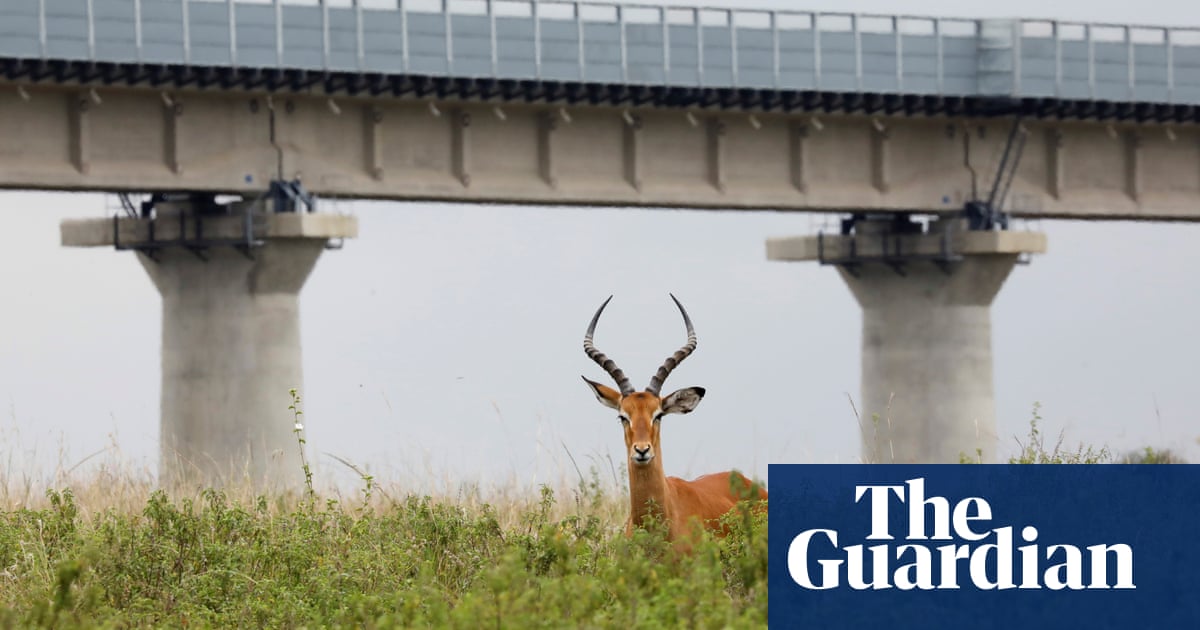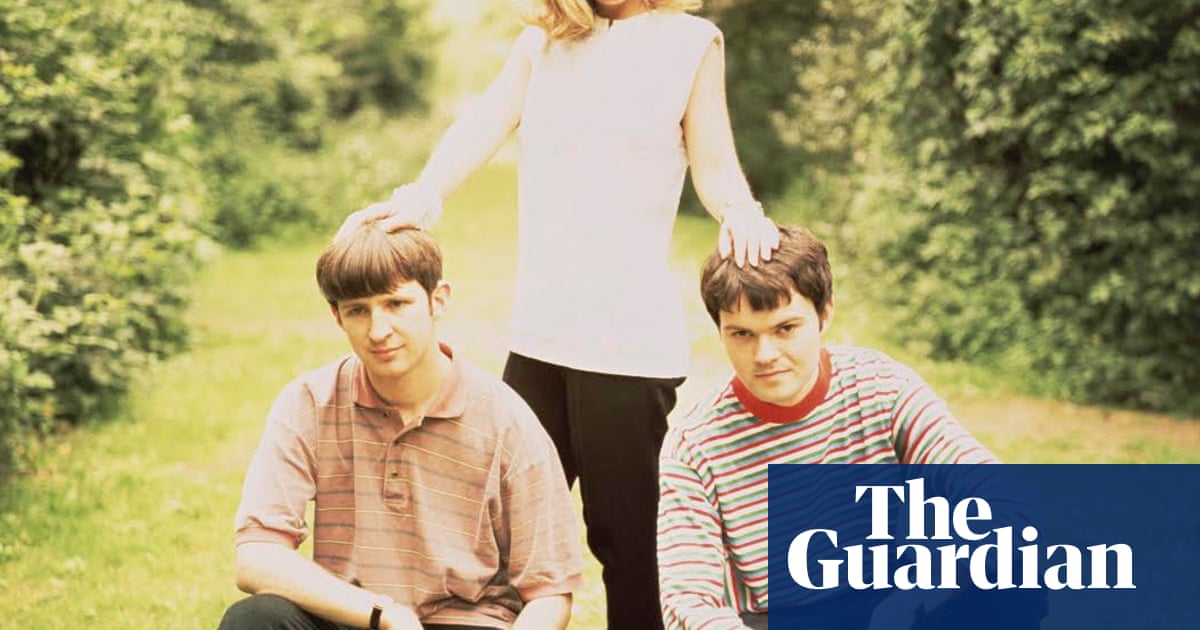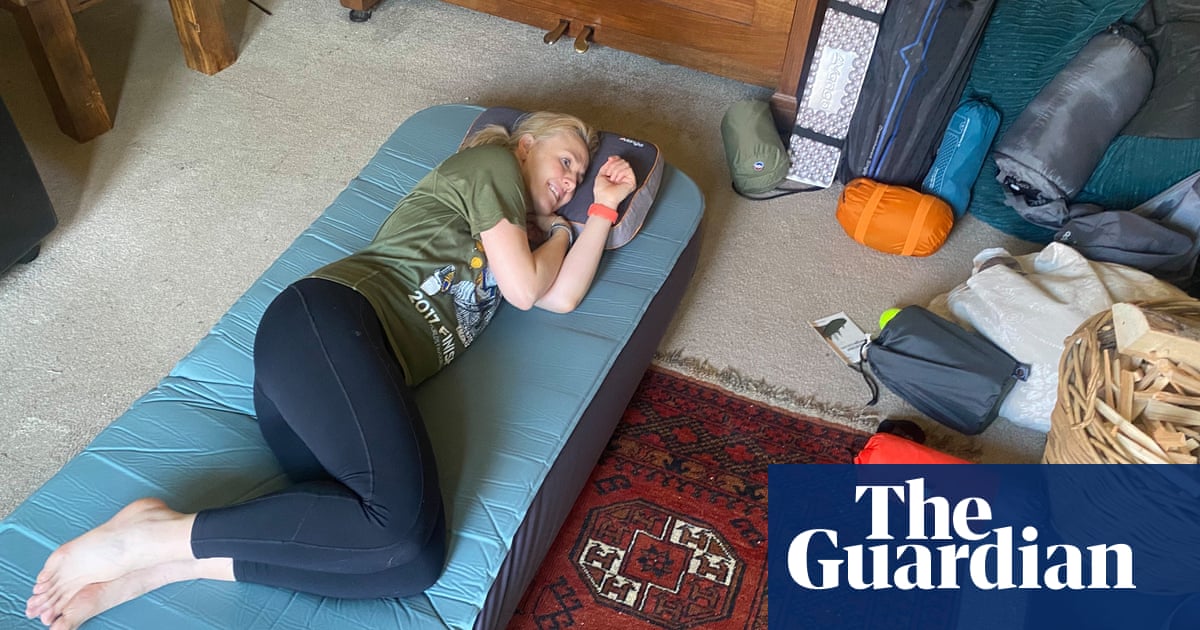Where was Wilhelm of Prussia crowned German emperor? Which year did Ian Botham make his Test match debut? And how long can a sea anemone live? These were the big questions we considered, sitting outside Heddon Orchard Bothy, listening to the river gurgle through the steep valley (for answers, see * below). I had a fat Penguin book of trivia (1991 edition) balanced on my knees, gifted by a past guest who’d written on the yellowing flyleaf: “This is your only entertainment.”
In some ways they were right. The bothy – a 19th-century apple store turned bare-bones bolthole – has nothing. No electricity. No running water – just space for sleeping and access to a loo, 100 metres away. In other ways it has everything you really need.
Bothies are more often associated with Scotland. But since 2015, the National Trust has opened a scattering of bookable “camps with walls” in the south-west, including Heddon Orchard and Foreland (a converted stable). This spring the NT unveiled a new one at West Challacombe, above the seaside village of Combe Martin, where five-star views cost from just £15 a night for exclusive use. Well-spaced along North Devon’s Exmoor coast, these three spots make it easy to plan a low-cost bothy-to-bothy walking weekend, using the South West Coast Path or other trails. Both Combe Martin and Lynton (between Foreland and Heddon) can be reached by bus from Barnstaple station, so you don’t need a car. And, although wild-feeling, each bothy is within walking distance of a pub.
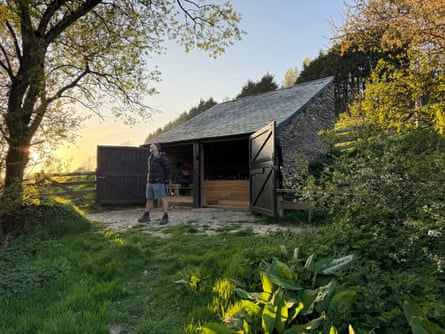
“The bothies are about getting more people into nature – we’re fighting to keep affordable accommodation down here,” said Amy U’Ren, the National Trust’s Volunteering & Community Officer for West Exmoor. She was showing me and my husband around the green, gorse-bright slopes of West Challacombe, 41 hectares (100 acres) of former sheep pasture that the NT is slowly working to make more biodiverse. “It’s exciting – we’re at the start of the project,” Amy added. “It’s about restoring nature and natural processes: sowing wildflowers, digging ponds, reconnecting rivers to floodplains, using pigs, cows and Exmoor ponies for grazing – all to create a mix of habitats.” So far, 20,000 trees have been planted here.
In the midst of all this sits the bothy, an old stone barn freshly fitted with sleeping platforms and full-width doors that fling open to the outside world. The loo is a quarter-mile away, in an outbuilding of 15th-century West Challacombe Manor – a rather more refined National Trust place to stay. But we were more than content. Having toured the sweeping site, we sauntered into Combe Martin for vital supplies – wine and beer – and climbed up to raise a toast atop Little Hangman cliff. It was the early evening of dreams, low sun scattering diamonds on the Bristol Channel, ferocious headlands rolling on either side. Then we headed back to the bothy for a camping-stove supper as night not so much fell as exploded, the moon so bright it cast our shadows on the grass.
I didn’t sleep well, thanks to my wafer-thin mat and the spine-tingling calls of owls. But what a morning! Dew-glistened grass, songbirds in the blossom, blush-blue skies. It was like stepping into a Coleridge poem. The perfect day for a walk.
From West Challacombe it’s about seven miles east along the South West Coast Path to the Heddon Valley, and 9.5 miles from there to Foreland Point – a spectacular two-day hike. But we decided to plot a bolder route. We’d parked at Heddon the previous day and then walked to West Challacombe via the coast path, up 318-metre Great Hangman, England’s highest sea cliff. Our plan was to follow a different course back, across the top of 349-metre Holdstone Hill, and continue through to Foreland, stay there, then return to Heddon for our last night, making the most of Exmoor’s combe-dipping, stream-tracing trails. It sounds tiring and complicated on paper, but in reality it felt in keeping with bothying’s adventurous spirit.
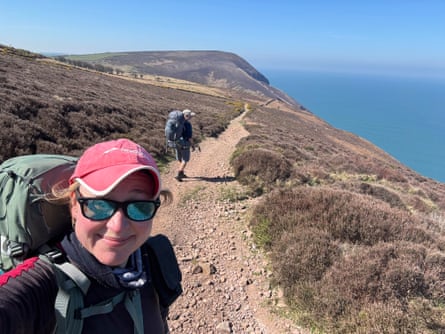
It was a glorious mix too, combining the best of the coast path – hidden Woody Bay, idyllic Lee Abbey Tea Cottage – with other gems. For instance, though only millimetres from the official coast path on the Ordnance Survey map, the broad higher path east of Heddon, rising towards a Roman fortlet, affords a remarkably different perspective. Likewise, the route into Lynton via Hollerday Hill: here you get a gull’s eye lookout over the Valley of Rocks, before a leafy path leads to the remains of Hollerday House, mysteriously burned down in 1913 – some say by suffragettes.
We were weary by the time we finally found Foreland bothy, hidden in a cleft with a sea view. Despite being tired, we still hiked the mile to Countisbury’s Blue Ball Inn – money saved on accommodation allowed for splurges on dinner. As we strolled there, a low sea mist cast the shore into romantic soft focus and deer grazed in the golden rays. On the return, at nautical twilight, a peachy ribbon blurred the horizon, while the full moon glared like a second sun – no need for torches. It was pure magic, and if we hadn’t been bothying we’d have missed it all.
after newsletter promotion
I didn’t sleep any better, but was still eager for our third day’s walk. First we headed east, passing an Australian, also on her third day – though, in her case, day three of a full 630-mile South West Coast Path hike. I envied her journey; she envied our bothies, having wild camped for the first time the previous night.

We left her to her epic walk, and eventually circled back west, using the Coleridge Way to take in Exmoor’s swollen hills then dip to wood-flanked East Lyn River as it swirled and gushed through its plunging gorge. We had lunch at Watersmeet, a fishing lodge turned National Trust tearoom in a deep, wooded valley where blue tits eat your crumbs, then picked up the coast path again at Lynton, this time following the classic route back to Heddon. It rained briefly, which made the sessile oaks’ mossy, twisted fingers seem all the more fairytale.
It dried up by the time we climbed the primrose-lined path to the bothy itself. Heddon Orchard is especially popular with families, Amy had said – there are nature trails and a beach nearby, and the Hunters Inn pub opposite. Indeed, sitting outside the bothy with the book of Penguin trivia, I watched Derek, the pub’s peacock, peering through the guest-room windows like the most majestic peeping Tom. Then a buzzard soared. And wood pigeons began to coo. And the sun sidled out of the valley, a fascinating slow creep from light to shade. Entertainment? We had it in spades.
* Answers: Versailles; 1977; 100 years

.png) 3 months ago
82
3 months ago
82






